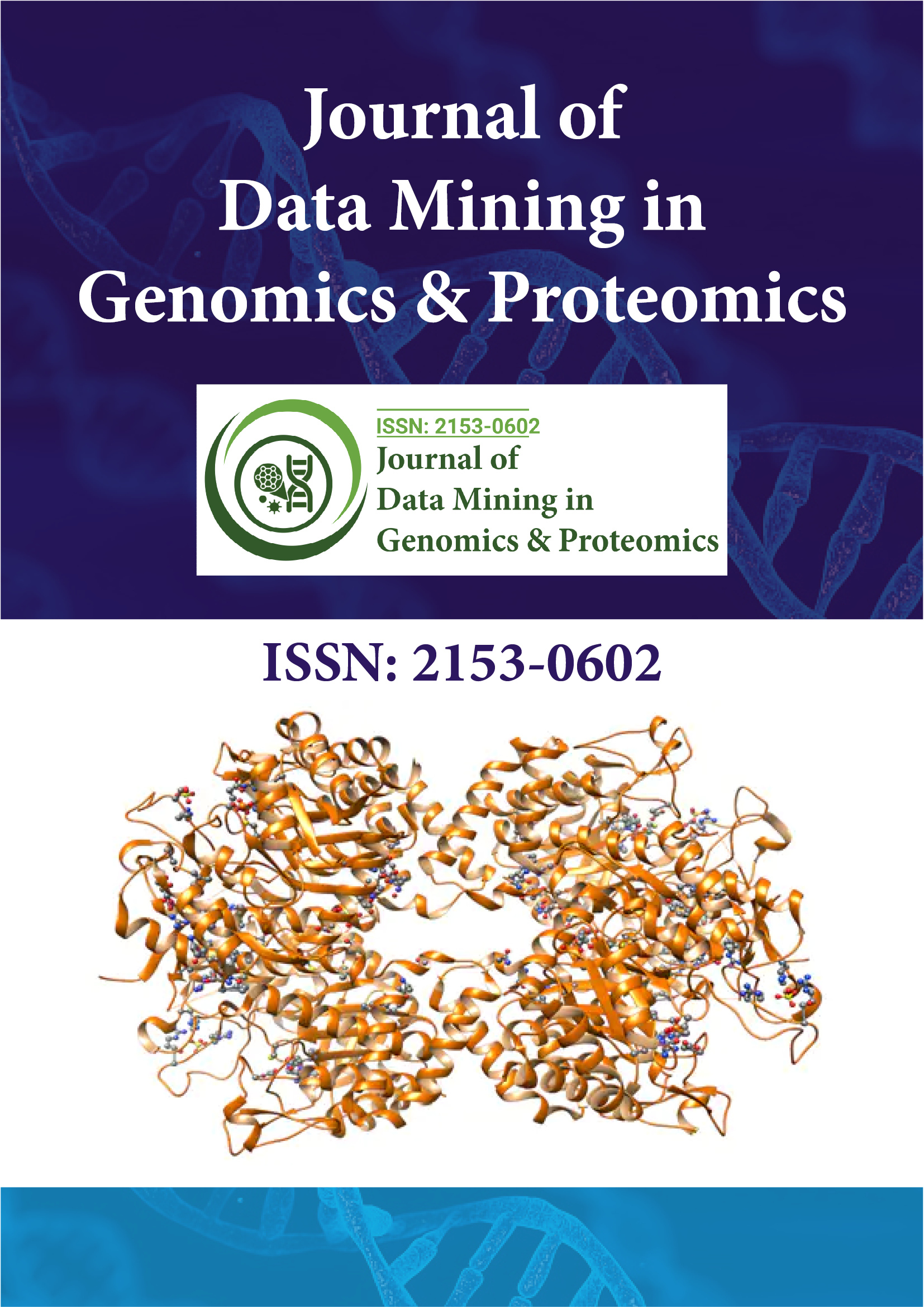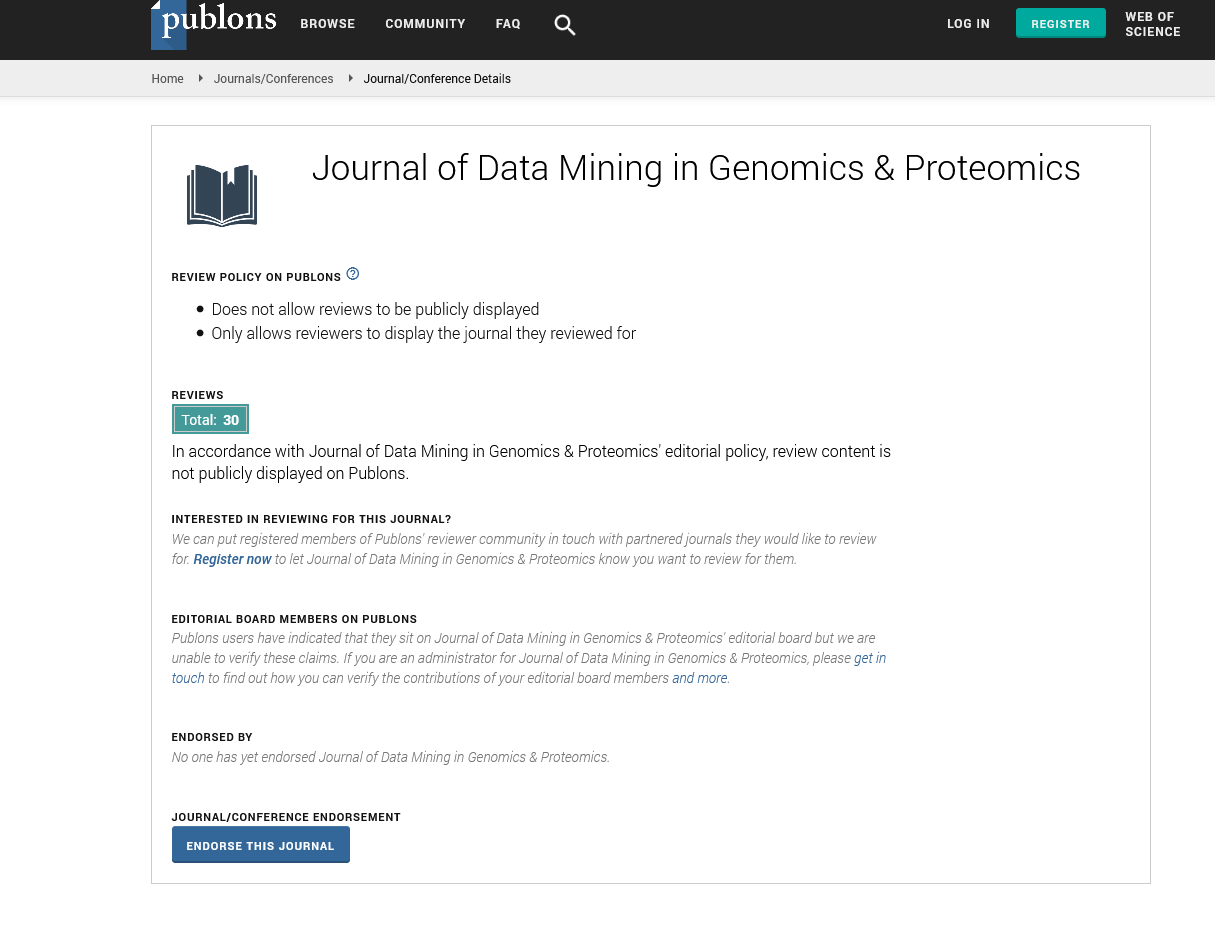Indexed In
- Academic Journals Database
- Open J Gate
- Genamics JournalSeek
- JournalTOCs
- ResearchBible
- Ulrich's Periodicals Directory
- Electronic Journals Library
- RefSeek
- Hamdard University
- EBSCO A-Z
- OCLC- WorldCat
- Scholarsteer
- SWB online catalog
- Virtual Library of Biology (vifabio)
- Publons
- MIAR
- Geneva Foundation for Medical Education and Research
- Euro Pub
- Google Scholar
Useful Links
Share This Page
Journal Flyer

Open Access Journals
- Agri and Aquaculture
- Biochemistry
- Bioinformatics & Systems Biology
- Business & Management
- Chemistry
- Clinical Sciences
- Engineering
- Food & Nutrition
- General Science
- Genetics & Molecular Biology
- Immunology & Microbiology
- Medical Sciences
- Neuroscience & Psychology
- Nursing & Health Care
- Pharmaceutical Sciences
Perspective - (2024) Volume 15, Issue 4
Proteomic Insights into the Molecular Classification of Chordoma and its Clinical Implications
Johanna Schleutker*Received: 20-Nov-2024, Manuscript No. JDMGP-24-27988; Editor assigned: 22-Nov-2024, Pre QC No. JDMGP-24-27988 (PQ); Reviewed: 06-Dec-2024, QC No. JDMGP-24-27988; Revised: 13-Dec-2024, Manuscript No. JDMGP-24-27988 (R); Published: 20-Dec-2024, DOI: 10.4172/2153-0602.24.15.367
Description
Chordoma, a rare malignancy that primarily affects the axial skeleton, is characterized by its origin from remnants of the notochord. Despite being relatively uncommon, chordomas present significant clinical challenges due to their aggressive nature, tendency for local recurrence and resistance to conventional therapies. Recently, proteomic analyses have provided novel insights into the molecular basis of chordomas, enabling a more refined classification of these tumors that could improve diagnosis, prognosis and treatment strategies.
Proteomics, which involves the large-scale study of proteins, has proven invaluable in the study of cancer. By analyzing the protein expression profiles of chordomas, researchers have begun to identify lead molecular markers that differentiate subtypes of this tumor. Proteomic techniques such as mass spectrometry have facilitated the identification of altered protein expressions and signaling pathways that contribute to chordoma pathogenesis. These molecular insights have revealed that chordomas, while sharing some common features, exhibit considerable heterogeneity in terms of protein expression, which has led to the recognition of distinct molecular subtypes within the disease.
One of the primary findings from proteomic studies is the identification of dysregulated pathways involved in cell survival, proliferation and resistance to apoptosis. For example, alterations in the PI3K-Akt and MAPK pathways have been frequently observed in chordomas, both of which are important for regulating cellular processes such as growth and survival. Understanding these pathways at a molecular level not only helps in classifying chordomas more precisely but also highlights potential therapeutic targets. In addition to signaling pathway alterations, proteomic analysis has revealed changes in the expression of proteins involved in cell adhesion, extracellular matrix remodeling and immune evasion, all of which contribute to the tumor's ability to invade surrounding tissues and resist immune surveillance.
From a clinical perspective, the molecular classification of chordomas based on proteomic data hold the potential for improving patient outcomes. With a better understanding of the molecular subtypes of chordoma, clinicians can personalize treatment strategies based on the specific proteomic signature of a patient's tumor. This could lead to more effective therapeutic interventions and potentially reduce the reliance on traditional, often ineffective, treatments such as radiation and surgery. Moreover, the identification of unique protein biomarkers could enable the development of diagnostic tools that allow for earlier detection and more accurate monitoring of disease progression.
Proteomic data has also establish the importance of understanding the clinical attributes associated with these molecular subtypes. For instance, certain proteomic profiles may correlate with more aggressive forms of chordoma, associated with a higher risk of metastasis or recurrence. By integrating proteomic data with clinical parameters such as tumor location, size and patient age, it is possible to develop more accurate prognostic models, guiding clinical decisions on the intensity of treatment and follow-up care.
Proteomic analysis is rapidly reshaping our understanding of chordoma by providing detailed insights into its molecular classification and clinical attributes. The identification of specific protein markers and dysregulated signaling pathways prepare for more precise diagnostic, prognostic and therapeutic approaches. As research continues, the integration of proteomics into clinical practice could significantly improve the management of chordoma, Influence for better outcomes for patients affected by this challenging disease.
Citation: Schleutker J (2024). Proteomic Insights into the Molecular Classification of Chordoma and its Clinical Implications. J Data Mining Genomics Proteomics. 15:367.
Copyright: © 2024 Schleutker J. This is an open-access article distributed under the terms of the Creative Commons Attribution License, which permits unrestricted use, distribution, and reproduction in any medium, provided the original author and source are credited.

